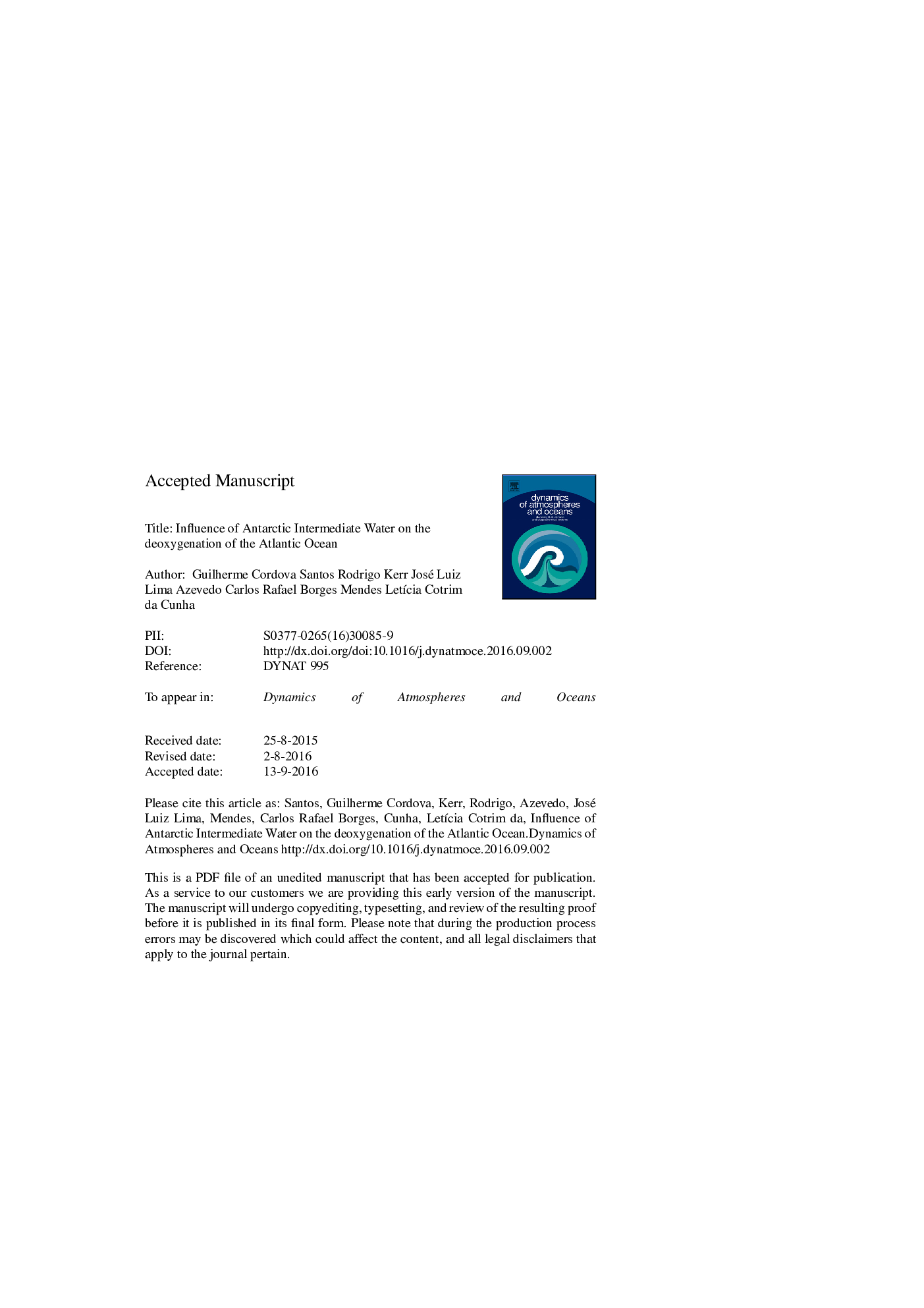| کد مقاله | کد نشریه | سال انتشار | مقاله انگلیسی | نسخه تمام متن |
|---|---|---|---|---|
| 5779163 | 1634214 | 2016 | 32 صفحه PDF | دانلود رایگان |
عنوان انگلیسی مقاله ISI
Influence of Antarctic Intermediate Water on the deoxygenation of the Atlantic Ocean
ترجمه فارسی عنوان
تأثیر آب متوسط میان قطب جنوب بر حذف اکسیداسیون اقیانوس اطلس
دانلود مقاله + سفارش ترجمه
دانلود مقاله ISI انگلیسی
رایگان برای ایرانیان
کلمات کلیدی
اکسیژن حداقل مناطق، اکسیژن محلول، آب متوسط قطب جنوب، تجزیه و تحلیل چند پارامتر بهینه
موضوعات مرتبط
مهندسی و علوم پایه
علوم زمین و سیارات
علم هواشناسی
چکیده انگلیسی
Hydrographic trends in the Antarctic Intermediate Water (AAIW) layer that may be associated with changes in the thickness and oxygen content of oxygen minimum zones (OMZs) in the eastern tropical South Atlantic (ETSA) and eastern tropical North Atlantic (ETNA) are investigated by using historical data (1960 to 2015). Our results reveal that the thickness of these OMZs has continually increased (2.58 ± 0.67 m yrâ1 for the ETSA and 3.37 ± 0.73 m yrâ1 for the ETNA), the mean oxygen concentration has decreased (- 0.12 ± 0.03 μmol kgâ1 yrâ1 for the ETSA and â 0.17 ± 0.05 μmol kgâ1 yrâ1 for the ETNA), and the mean temperature has increased. The optimum multiparameter analysis method is used to track modifications in the AAIW along its path through the South Atlantic Subtropical Gyre. We observe an AAIW layer vertical expansion rate of 1.67 ± 0.71 m yrâ1, a decrease in the mean oxygen concentration of â 0.18 ± 0.04 μmol kgâ1 yrâ1 and an increase in the mean temperature of 0.010 ± 0.005 °C yrâ1. Moreover, a similar decrease in oxygen concentrations is observed in the AAIW layer of the studied OMZ regions compared to those in the non-AAIW portions of these OMZs, which indicates strong deoxygenation in this water mass over time. Our results suggest that warming in the AAIW source region and in its extensive temporal displacement through the SASG to the eastern tropical Atlantic Ocean appreciably shifted this water mass toward lower densities with depleted oxygen (increases in ventilation age and oxygen consumption). The warming trend that is reported here suggests that global warming is one of the factors that influence oxygen solubility changes during the deoxygenation and expansion of OMZs.
ناشر
Database: Elsevier - ScienceDirect (ساینس دایرکت)
Journal: Dynamics of Atmospheres and Oceans - Volume 76, Part 1, December 2016, Pages 72-82
Journal: Dynamics of Atmospheres and Oceans - Volume 76, Part 1, December 2016, Pages 72-82
نویسندگان
Guilherme Cordova Santos, Rodrigo Kerr, José Luiz Lima Azevedo, Carlos Rafael Borges Mendes, LetÃcia Cotrim da Cunha,
